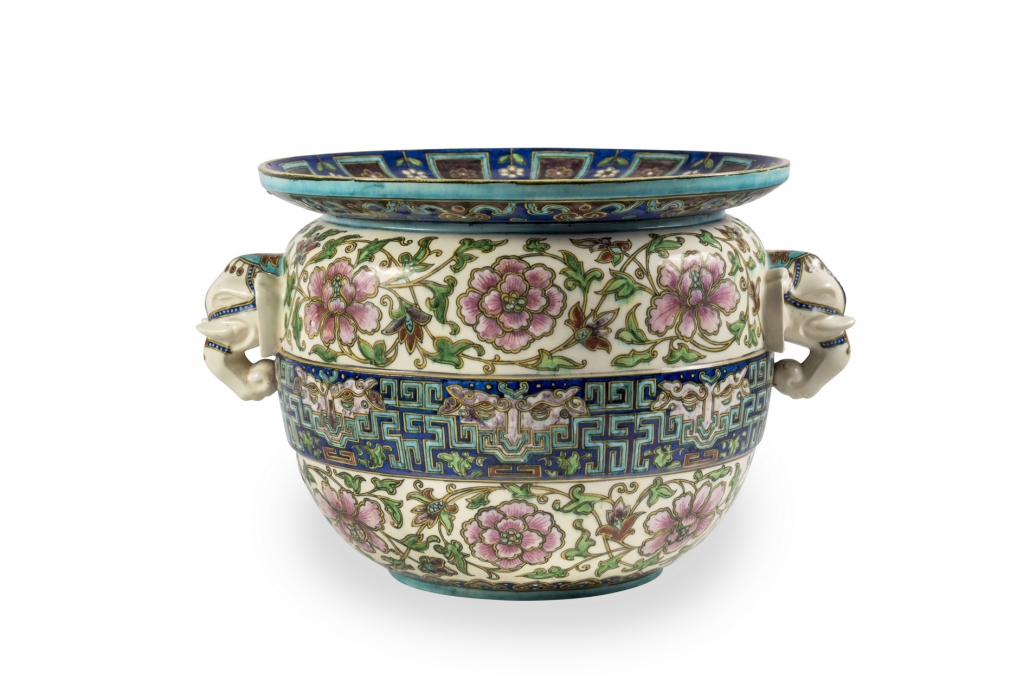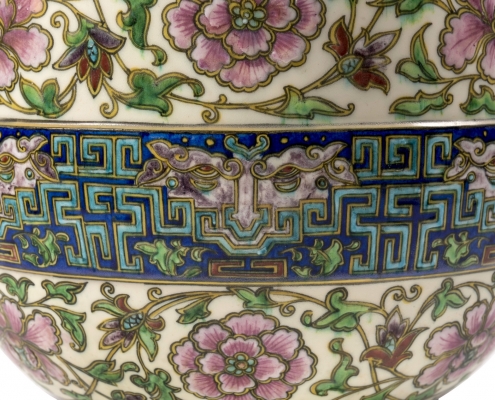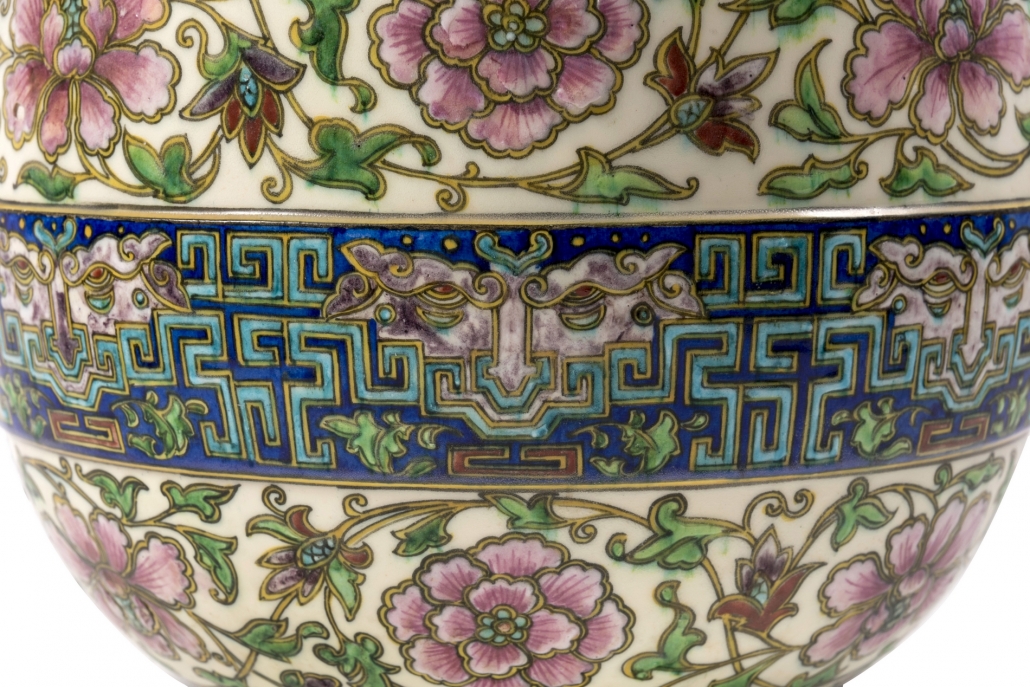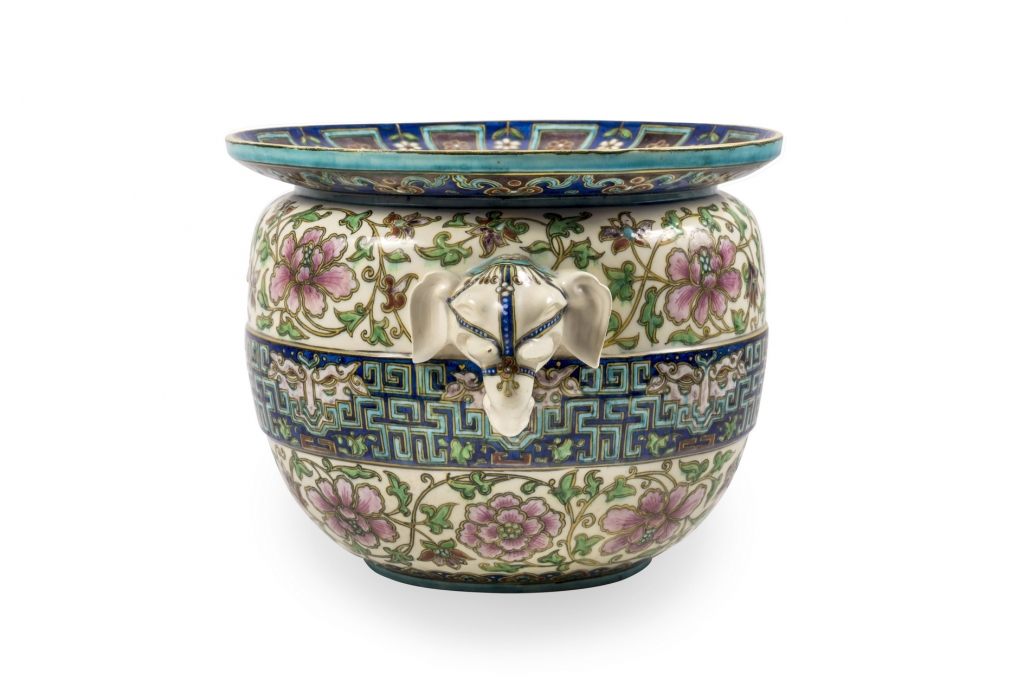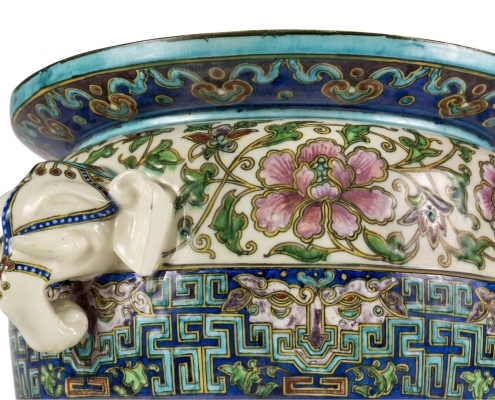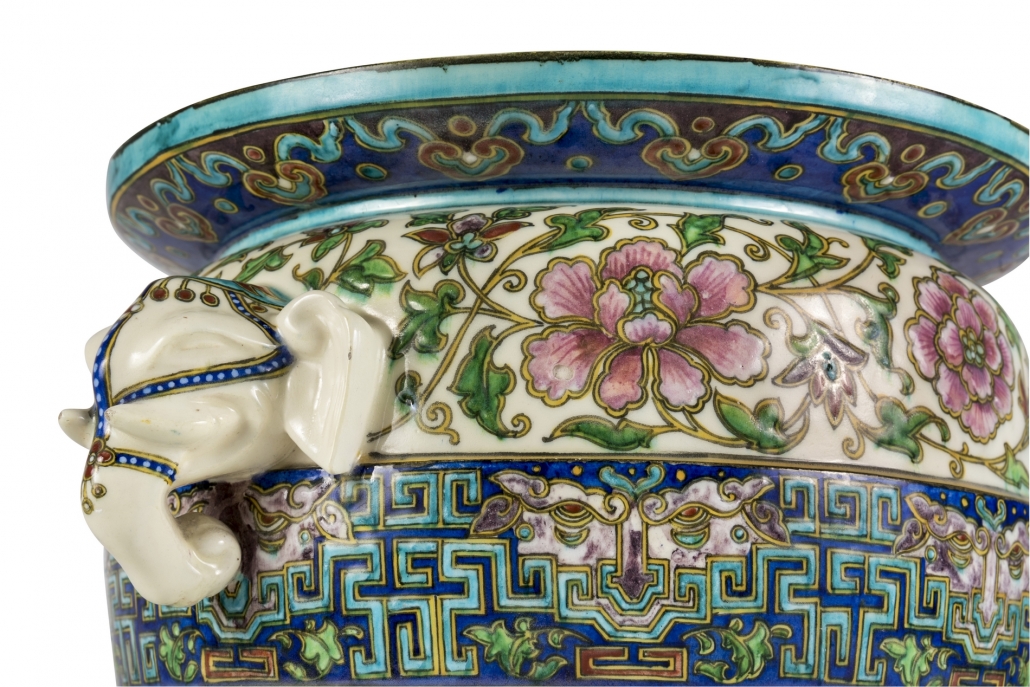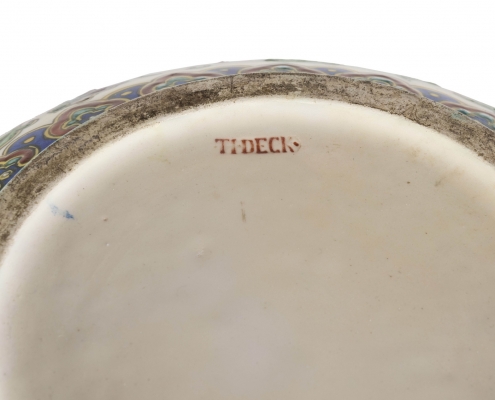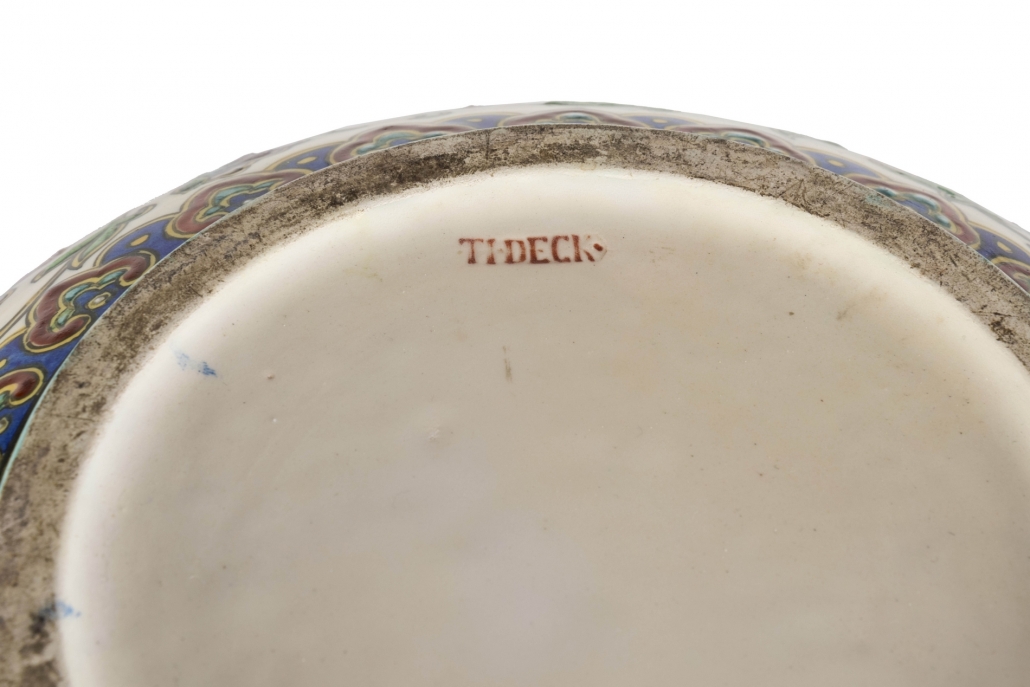Planters with elephant handles – Theodore Deck, circa 1870
This Asian-inspired “neo” Théodore Deck planter with an ovoid shape is composed of three horizontal friezes, a wide neck and a pair of elephant handles. The first and third friezes are enhanced by pink flowers on a light beige background. These Japanese style flowers can be found in many 19th century ceramists’ works, such as the pieces created by the french Eugène Victor Collinot.
Théodore Deck plays with the stems of the flower which intertwine to give movement to the work. The interlacing becomes a pretext for the delicate decoration of the vase. The central frieze with a royal blue background features motifs of “Taotie” masks, which takes us back to Chinese culture and gives this vase a very special style. This last frieze contrasts with the other two by its geometric dimension. These splendid handles with elephant heads refer to Indian culture.
In this work, Théodore Deck uses his characteristic and beautiful blue, a shade of turquoise known as “Deck Blue”, which will become a signature of his production. This characteristic blue can be seen throughout the entire piece, particularly on the neck and on the “Taotie” masks. His removed pictorial style close to the techniques of aquafortist and the brightness of the colours give a freshness and confer a particular spontaneity to the scene, made possible only thanks to the undeniable talent of the artist.
With the opening of Japan to the Western world at the end of the 1850s, artists and craftsmen were increasingly influenced by Japanese art, which was then imported and displayed in many specialized galleries. It was highly appreciated, both in Paris at the Universal Exhibitions of 1867 and 1878, and in Europe.

